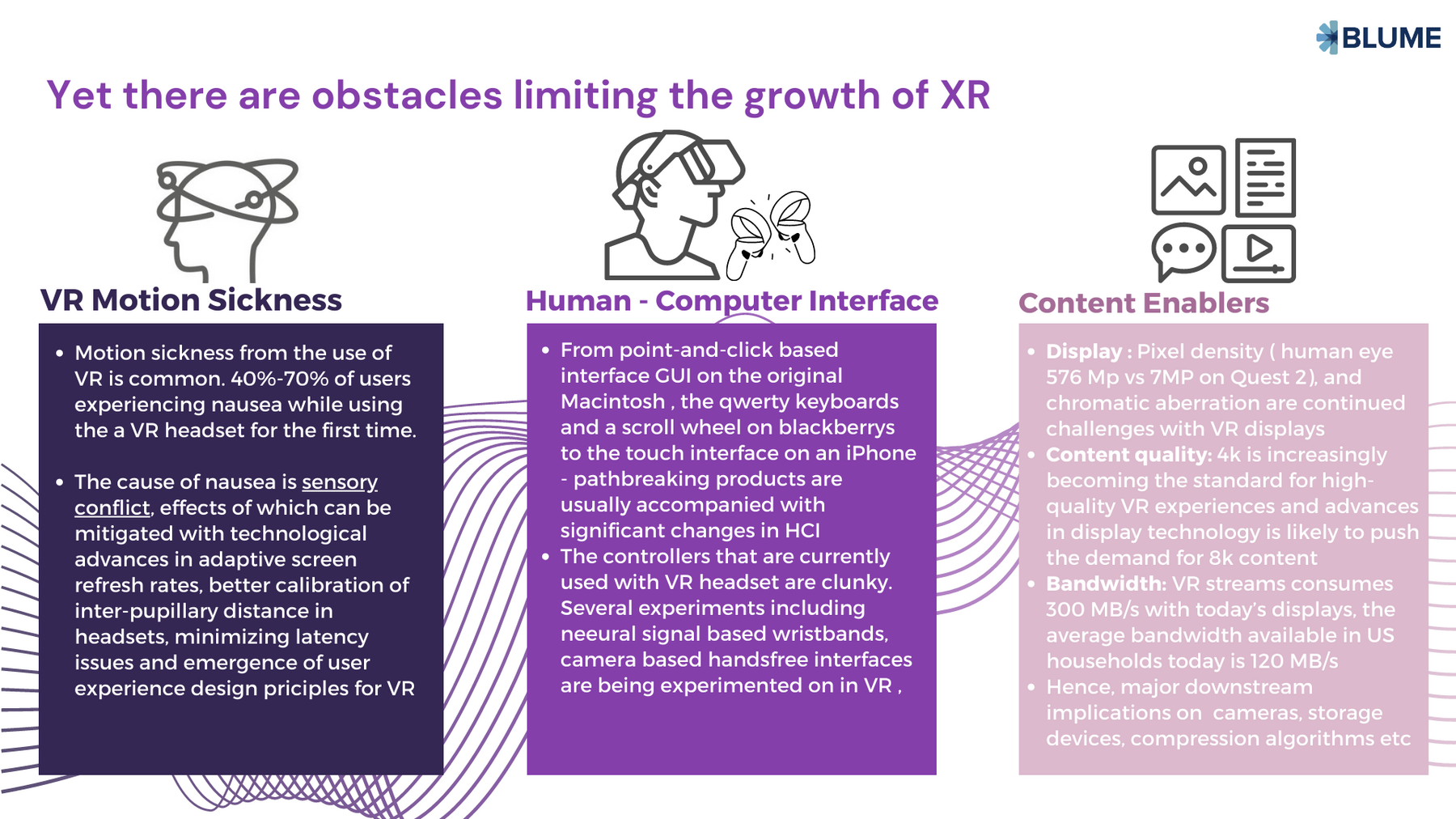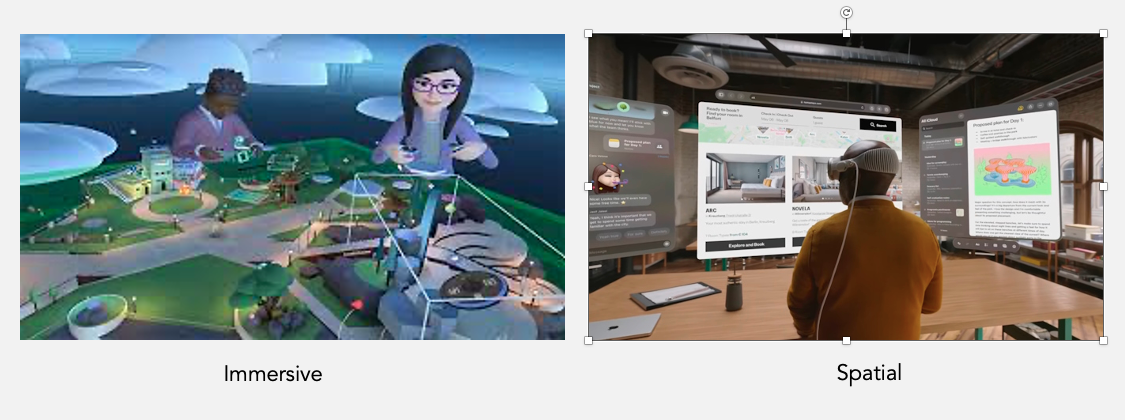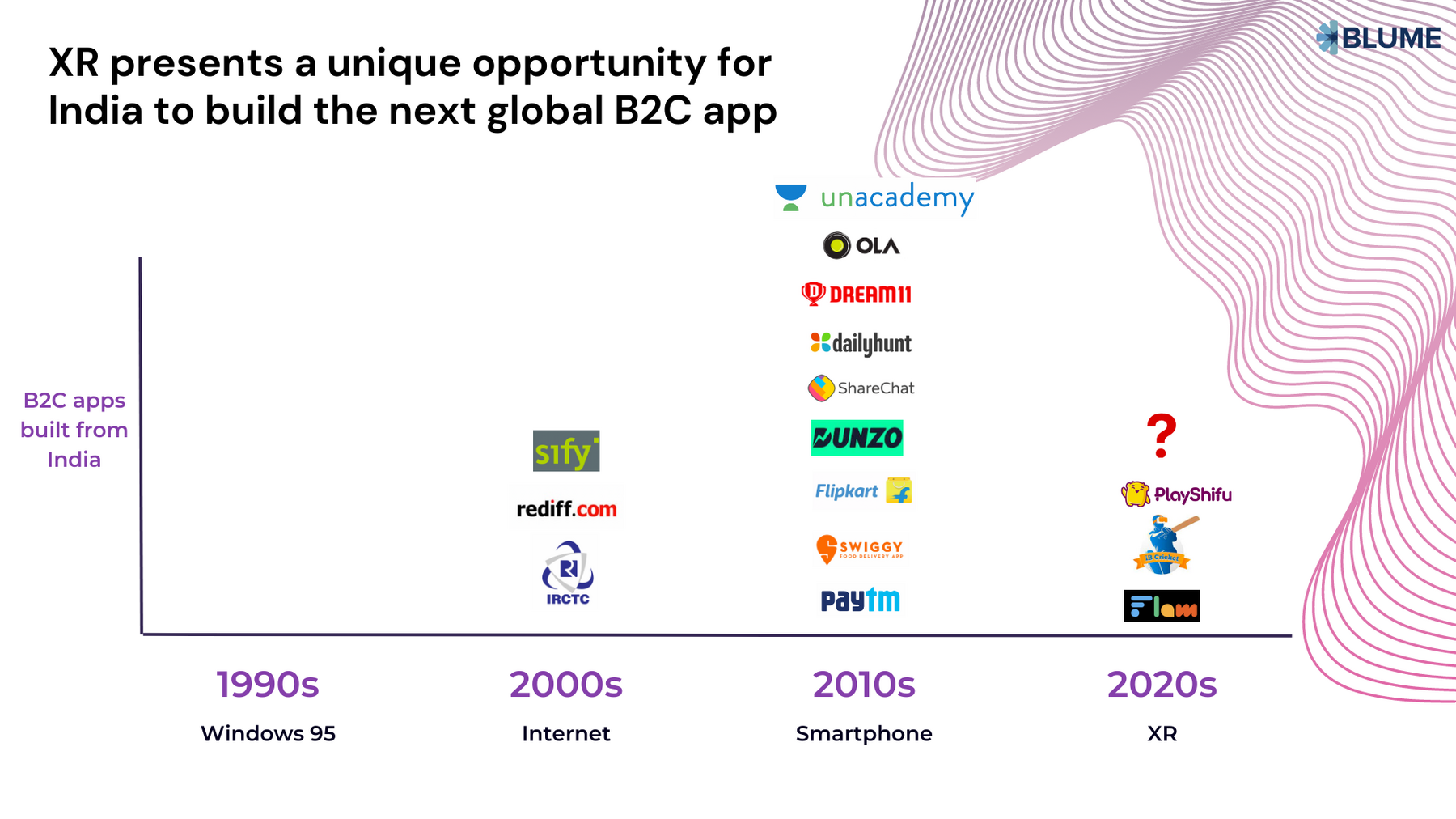The Next Big Thing Isn’t Near, It’s Here
- Published
- Reading Time
- 7 minutes
- Contents
Snippets from Blume's XR thesis
The biggest prize in technology is reserved for those who are able to build the future. Every few years a new platform is born and the company that either builds it first or scales it most, manages to accrue the most amount of value. That company then has the privilege to define the rules of engagement for a generation on that platform. At scale, this pole position is particularly lucrative with healthy gross margin and profits. So much so that the most valuable company in the world for the majority of time over the last 30 years has been one that owned the dominant computing platform at the time (ie Microsoft and Apple)
Therefore it's no surprise every tech company ( Apple, Facebook, Google and Microsoft) have all been attempting to build the next major platform and each has its own interpretation of what that might be. However thus far, it was Facebook ( now Meta) that has shown the most intent and promise by investing nearly $30 Billion into its Oculus Virtual Reality platform.
However, kickstarting a new platform is an expensive and arduous affair. First, a wide range of technological challenges must be solved, which comes with a hefty R&D cost. Next, a developer ecosystem must be seeded. Finally, consumer adoption must take off. Over the years, it has been said that a platform reaches critical mass when it has 10 million devices in use. Even before Apple threw its hat in the ring, VR had crossed that threshold. In 2022 alone, there were over 20 million headsets sold. For comparison, that is the same scale the iPhone was at in 2009 (when 22 million iPhones were sold).
A deeper look at the consumer reviews and feedback pointed to three fundamental obstacles that have limited the adoption of VR thus far.
The launch of Apple's VisionPro platform addresses some of the key challenges that have hindered the adoption of VR. In case you are in the minority that missed the release, here is a quick TLDR:
- Addressing Motion Sickness: The prevalence of motion sickness in VR was primarily attributed to display latency and quality issues. However, Apple has introduced the revolutionary "R1" processor, which enables real-time sensor processing. This breakthrough has effectively mitigated motion sickness problems, as explained in detail by Ben Thompson
- Revolutionizing Human-Computer Interaction (HCI): Apple did what apple does best and has managed to redefine how humans interact with computers in VR. By incorporating advanced eye tracking and hand tracking cameras, they have created an astonishing hands-free interface that appears almost magical.
- Expanding Content Library: In addition to Apple TV+, the company has partnered with prominent names in the entertainment industry, including Disney and the NBA, to curate an impressive collection of content for the platform. This diverse content library enhances the overall VR experience for users.
Ripple effects of the launch
While Apple’s announcement represents a tectonic shift in the industry. It's important to take note of three key aspects
- Immersive vs Spatial: The embrace of MR by apple has created a subtle shift in the landscape. The popular conception for immersive apps was one where the user makes use of the 360 degree field of view. Instead if you look closely at most of Apple’s UI design and many of the reference applications that were shown at WWDC, Apple’s approach seems to be one that is oriented towards providing a wider canvas of 2D screen space to its users. In some ways, this spatial approach leans more towards a 2.5D interface rather than the expected immersive 3D experience. This change, while subtle, is one that is consequential because Apple’s design language tends to leave its imprints on even competing platforms for years to come. Apple’s infamous legal battles against Microsoft on the look and feel of windows, (even typefaces, according to Steve Jobs) and against Google over Android (which was described as a stolen product by Jobs), exemplifies this.
- User adoption beyond just the gaming demographic: Apple’s spatial approach is likely to broaden the appeal of XR beyond the current cohort of early adopters ( i.e. gamers) and find resonance with the Apple’s core user base.This includes creative professionals such as architects, graphic designers, UI/UX designers, game designers, movie editors who are already native users of the Apple ecosystem and would love a larger canvas. This user persona can be likened to those currently benefiting from large monitors like the Apple XDR display or professional desktops like the Mac Studio or Mac Pro (estimated to have sold 1.5Mn units last year). This shift has significant implications for the developer ecosystem, as they will adapt to the changing audience and create spatial applications that cater to this new cohort of users.
- The Meta Question (pun intended) : Due to a variety of considerations, including differing customer preferences on closed vs open platforms, cost considerations and even regulatory concerns - the operating system/ platform space is never a monopoly market. For many of us, our first smartphone was not an iPhone, it was an Android device. A similar phenomenon is likely to play out in XR too. Historically there has always been an open alternative to Apple’s walled garden. Meta has consolidated its position to be that alternative. It is only a matter of time before Apple’s innovations are replicated by Meta and others. Meta’s oculus OS has already achieved critical mass and will be seen as the value for money alternative to the apple’s Vision line of headsets ( at $499, the Quest 3 is already looking a bargain compared to Apple)
All of this points to an interesting moment in time where many developers will start to get interested in building for the XR platform.
Beyond the obvious
When the iPhone was launched, early narratives focused on its potential for communication capabilities, music playback and internet browsing. However, the true value creation came a few years later when innovative apps like Uber and DoorDash leveraged the user interface and advancements in mapping technology to completely reinvent key use cases.
Similarly, in our thesis, we aim to make educated guesses about the potential areas where the next wave of use cases could emerge within this new XR paradigm. Gaming and entertainment have been widely recognized as the frontrunners in this regard. However, we pondered upon what other possibilities could arise from this transformative platform.
To answer this question, we narrowed down our thinking down to two primary considerations: .
- Solving information asymmetry / trust: From a certain perspective, it can be argued that every iteration of computing has solved more complicated information asymmetry problems or solved larger information asymmetry problems than the previous iteration. The early days of the internet primarily focused on bridging basic information gaps, such as providing access to details about available apartments for sale or delivering news from different countries. With the advent of mobile computing, the bar was raised, and more complex information asymmetry problems were tackled. The mobile era introduced solutions that went beyond basic information retrieval and began addressing more nuanced challenges. For instance, mobile apps and services emerged that allowed individuals to identify potential romantic interests nearby or purchase jewellery through a social media post. These applications harnessed the power of location-based data and real-time communication to solve information asymmetry problems that were previously difficult to tackle.
- Which use cases offer an exponentially better user experience in 3D compared to 2D : Reflecting upon the previous major iteration in the computing platform to mobile devices, we can observe that the greatest value was often generated by use cases that were significantly superior on mobile compared to desktop (e.g., booking an Uber or ordering food delivery without having to rely on a laptop). Similarly, we explored use cases that could be 10 times better in 3D (or 2.5D) compared to experiences on traditional phones or computers
Additionally, we considered two other key factors: the likelihood of interest from Apple's core user base and the criticality of the use case itself.
Using this (rather imperfect) framework, we have compiled a list of areas where we believe the impact of this platform shift will be most strongly felt. We have focused on use cases that exhibit a combination of potential value, a compelling user experience in XR, and the likelihood of early adoption by creative professionals.
Beyond the obvious: XR usecases
| Use case | Is the XR experience ahead of the 2D experience | Solves for information asymmetry | Criticality (in terms of ticket size and frequency of usage) | Interest amongst early adopters | Comments | |
|---|---|---|---|---|---|---|
| Interior design | ✅ | ✅ | ✅ | ✅ | Help designers communicate their vision with customers.One of Ikea’s USPs was its display based retail experience. Now your living room can turn into that. | |
| Property inspection for Real estate purchase / rental | ✅ | ✅ | ✅ | ✅ | A great amount of time goes into vetting even the top of the funnel due to mobile's inability to capture finer details of home inspections. With VR we can move beyond images to shortlist a property to buy / rent. | |
| Wedding planning | ✅ | ✅ | ✅ | ❌ | Planning for weddings remains a high-touch, bespoke use-case that also has an inherent element of collaboration involved. XR could help solve the friction in the design / planning process. | |
| B2B training | ✅ | ✅ | ✅ | ❌ | Improve the efficiency of industrial training across industries like mining, manufacturing, aviation, energy & utilities | |
| Concerts and ESports | ✅ | ❌ | ✅ | ❌ | One of the best use cases for XR that is clearly miles ahead of the 2D version. Especially relevant for brands who already have strong distribution networks | |
| Collaboration / Pro-sumer creation tools | ✅ | ❌ | ✅ | ✅ | What will be the Figma for 3D? Spans different verticals and can include collaboration over design, gaming, coding | |
| Construction | ✅ | ✅ | ✅ | ❌ | For reasons similar to interior design, construction aids well for XR throughout the value chain. The use of sophisticated imagery techniques in this industry is a sufficient proof point. | |
| Dating | ✅ | ✅ | ❌ | ❌ | XR for dating could very well solve for the friction that exists between a match and the initial meeting when users are engaging over a 2D interface. | |
| B2B support and inspection | ✅ | ❌ | ✅ | ❌ | Industries include Manufacturing, Energy & Utilities, Supply chain. The combination of this + a digital twin equivalent would offer enhanced diagnostics of shop floors, plants, etc. |
India’s role to play: Is it time for the cross-border consumer story
Paradigm shifts lead to a rearrangement of the decks in the value chain and represent a great opportunity for newcomers into an industry. To paraphrase a Lenin quote, there are decades when nothing happens and then there are weeks when decades happen. In the case of VR these are such weeks where much happens together, and we believe the time is right to build the killer app for XR from India.
India has steadily moved up the value chain at every major paradigm shift in the computing platform. When Windows 95 was introduced, many would recall that there were virtually no Indian-made applications to open when one clicked the start button. However, the advent of the internet led to the emergence of portals like Rediff and Sify, showcasing India's capability to adapt and create relevant content.
Similarly, with the rise of smartphones, a plethora of Indian apps and games captured the imagination of domestic users. Now, with the paradigm shift to VR, perhaps the time has come for India to establish itself as a global player by building popular consumer applications for the world - from India.
Several factors align in India's favor this time around. The country boasts a mature entrepreneurship and venture capital ecosystem, which has significantly evolved since the launch of the iPhone in 2009. Additionally, India has a thriving $1.3 billion animation industry, and its outsourcing sector has cultivated a robust talent pool in 3D design and animation. Over the years, Indian professionals have honed their expertise in creating visually stunning and immersive experiences for global clients.
.In conclusion, VR is poised to revolutionize industries, and India has a unique opportunity to make its mark in this rapidly evolving space. For all the use cases mentioned above, we think the likelihood of companies building a global application is highest if they build over the next 2 years and capture the rising tide. By leveraging its mature entrepreneurship ecosystem, thriving animation industry, and talented professionals in 3D design and development, India can position itself as a global leader in the creation of immersive VR experiences. The time has come for India to embrace this paradigm shift and realize the full potential of its technology capability. It's time to be at the front end of the value chain.
Over the last few months, we have had the opportunity to meet and learn from many exciting teams building in this space. We expect to see even more companies to emerge from this space given the talent density we have in the country. If you would like early access to our thesis or if you are thinking about starting up in this space / would like to brainstorm any potential ideas, do feel free to record your interest in this form and we would also appreciate any feedback/comments you have about this blogpost, you can reach out to us on joseph@blume.vc and swathi@blume.vc






